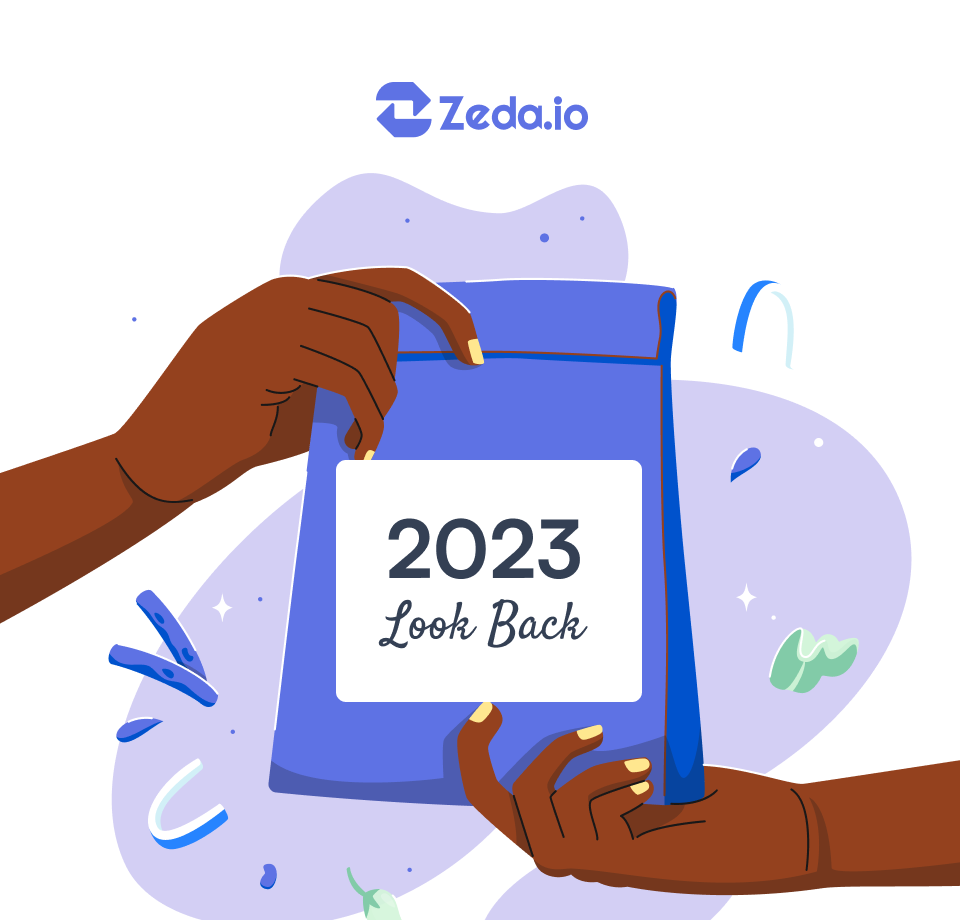Hello, all you product-loving folks! 💜
Welcome to this week's edition of Product Café, your weekly cup of coffee for everything product management, startups, AI, and more. ☕
Before anything else, we extend our heartfelt New Year greetings to you all! 🎉
Reflecting on the past year, we recognize the rollercoaster of successes and challenges we navigated. However, we always believe it's the learning from these experiences that truly counts.
Coming back…!
In our last newsletter, we tackled a topic that hits close to home for many of us: the dreaded product death cycle. It's that all-too-familiar scenario where we pour heart and soul into developing a feature our customers asked for, only to watch it gather digital dust. We've all been there, feeling the sting of wasted time and resources on something that just doesn't click. It's not just frustrating; it's a reality check.
But here's the thing: there's a crucial skill that can save us from this cycle - saying 'No'. Yep, you read that right. Saying 'No' to certain customer requests isn't just about avoiding resource wastage; it's about steering your product's journey in the right direction with purpose and vision.
That's why saying no to some customer requests is a skill worth mastering.
Want to learn how to do it? Keep reading, guys! 😃
As product managers, we're often caught in an overflow of feature requests - from customers, team members, and upper management. A crucial skill is learning to say 'No' effectively and without harm.
Considerations for Declining a Request
Insufficient Information: Reject requests lacking in relevant details or value-added potential. Remember, informed decisions, backed by data, are pivotal in steering your product's journey.
Misalignment with Vision: Ensure every new feature resonates with your core product vision. If it doesn't, it might not be the right addition.
Limited Demand: Building features based on a single customer's request isn't always practical, especially if it doesn't resonate with your broader customer base.
No Apparent Demand: If a feature lacks demand or potential to create demand, it's reasonable to set it aside.
Acknowledging these reasons is one thing, but communicating a 'No' to your customers is another. It's not just about what you say but how you say it. Let's delve into how you can navigate this dilemma with diplomacy and tact.
The Art of Saying 'No' Diplomatically
Reject with Tact: Saying 'No' doesn't mean losing a customer. Articulate that the feature isn't in your current roadmap, but you're open to future possibilities.
Acknowledge and Educate: Customers may identify problems, but their solutions might not always be feasible. Take the opportunity to explain better alternatives and provide insights into your decision-making process.
Express Gratitude: Always show appreciation for customer feedback. It's a crucial part of collaborative growth.
Avoid False Promises: Transparency is key. Avoid giving hope where there's none to maintain trust.
Remember, saying 'No' is inevitable in managing a growing product. It's about balancing customer needs with your business objectives and values.
As we embark on this new year, let's aim for sound decision-making, stronger customer relationships, and significant product milestones. For more insights on mastering the skill of saying 'No,' don't miss our latest article.
Happy New Year, and here's to a year of informed choices and thriving partnerships!
Microsoft Copilot Makes a Quiet Launch
Have you heard the latest? Microsoft has introduced something quite intriguing: Microsoft 365 Copilot. It's a significant addition to the world of workplace technology, blending advanced AI with the familiar Microsoft 365 suite. Here's what this means for the average user:
What is Microsoft 365 Copilot?
Simply put, Copilot is an AI tool integrated into Microsoft 365 applications like Word, Excel, PowerPoint, Outlook, and Teams. Its role? To assist users in their daily tasks, leveraging the power of AI to enhance productivity and creativity.
Here are some key features that you should know.
Word: Copilot in Word helps start the writing process, offering draft suggestions to kickstart your creativity.
Outlook: Managing emails becomes more efficient with Copilot, summarizing threads, and proposing quick responses.
Teams: In Teams meetings, Copilot can summarize discussions and suggest action items, making meetings more productive. So, meetings don’t have to be boring anymore!
An exciting feature of Copilot is Business Chat. It's designed to work across your Microsoft 365 data, providing contextually relevant responses to natural language prompts. The AI model promises to bring about positive changes in the way we work and can save a lot of our time.
Microsoft 365 Copilot represents a significant step in AI integration into everyday work tools, aiming to streamline tasks and enhance user productivity. It's an interesting development for anyone who uses Microsoft 365 apps and could signal a shift in how we interact with technology in our work environments.
Good reads for extra credit 📚
Making Right Decisions as a Product Manager
The Secret to Building a Customer-Centric Culture
What’s brewing on Zeda.io’s side?☕️
What a year 2023 has been! It's been a long journey of growth, innovation, and exciting developments here, and we're thrilled to have shared this journey with you. From the grand launch of Version 2 to rolling out a plethora of dynamic features, we've come a long way.
But here's the thing - none of this would have been possible without your support and valuable contributions. You've been the driving force behind our milestones and achievements. And we're excited to share a snapshot of this incredible journey with you.
Click the image below to take a walk down memory lane👇
That’s all, folks! Have something you want to share? Put them in the comments below, and we’ll get back to you soon.
See you again in the next edition! 🥂
It’s hard to explain what a Product Manager does, we get it. But you know what’s not that hard? Sharing this newsletter with your friends and colleagues!










